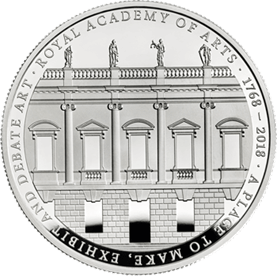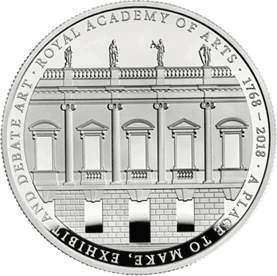A Connection of Two British Icons
For 250 years, the Royal Academy of Arts (RA) and The Royal Mint have maintained historical, cultural and symbolic links. A number of Royal Academicians have created coin designs for The Royal Mint and have also become important figures in the history of British coinage. Richard Yeo, a founding member of the Royal Academy of Arts, produced designs for the coinage of George III and became Chief Engraver of The Royal Mint. William Wyon RA produced portraits of George IV, William IV and Queen Victoria, while also becoming Chief Engraver. Arnold Machin RA produced the decimal portrait of The Queen, the 1972 Silver Wedding Anniversary Crown and the 1977 Silver Jubilee Crown. Later, David Mach RA and Christopher Le Brun RA produced designs for twenty-first century Britannia coins.
Evidently, the connection between these iconic British organisations is rich and steeped in history. The Royal Academy of Arts has influenced The Royal Mint through coin designs and artistic guidance, and The Royal Mint has stimulated Royal Academicians through giving them a platform to create designs for British coinage. With artistic influence at the forefront, these two British organisations have again come together to celebrate and commemorate the 250th anniversary of the Royal Academy of Arts. A £5 coin has been designed by Sir David Chipperfield RA who has also led the redevelopment of the Royal Academy of Arts as part of the RA250 celebrations.
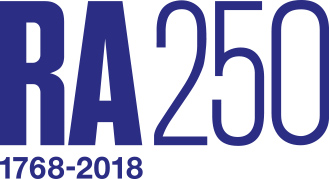
![]()
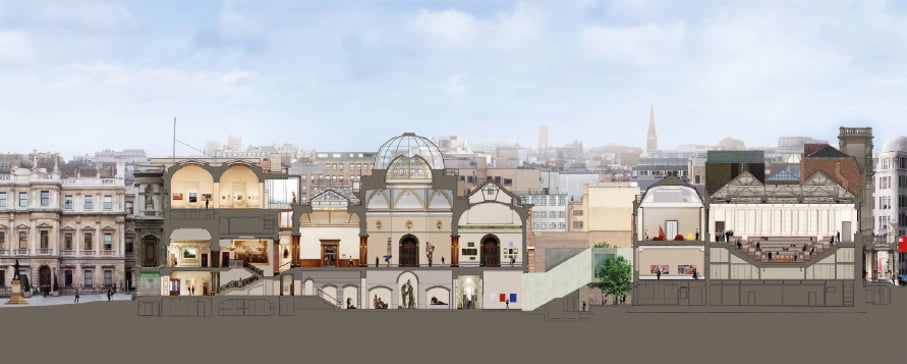
The aim of the project is to:
"Create specifically detailed buildings that are intimately connected to context and function"
David Chipperfield Architects
A Vision of Creativity
Founded in 1768, and given royal assent by George III, the RA aimed to champion the arts in Britain through education and exhibition. To this day, and through changing times in Britain’s history, these morals remain true – an unerring focus on producing, guiding and showcasing the finest pieces of art is at the core of the Royal Academy of Arts’ existence.
From architects, sculptors, painters and engravers, printmakers and draughtsmen, the Royal Academy of Arts is steered by the vision of the greatest artists and architects. Whether this is through teaching in the RA schools or deciding on the exhibitions programme, the direction of the RA has always been, and remains to be, overseen by renowned and brilliant masters of art. This has never been more evident than today where as part of the RA250 celebrations, Burlington House and Burlington Gardens are being linked together – making space for new learning, debate and exhibitions. The significance of the anniversary is prominent on the coin, which features the facade of Burlington House in all its grandeur.
Led by Sir David Chipperfield RA, this redevelopment will see a brand new space for architectural projects, a new Clore Learning Centre for the making of the art, and a remarkable lecture theatre – the perfect space for new debates about art, culture and everything in between.
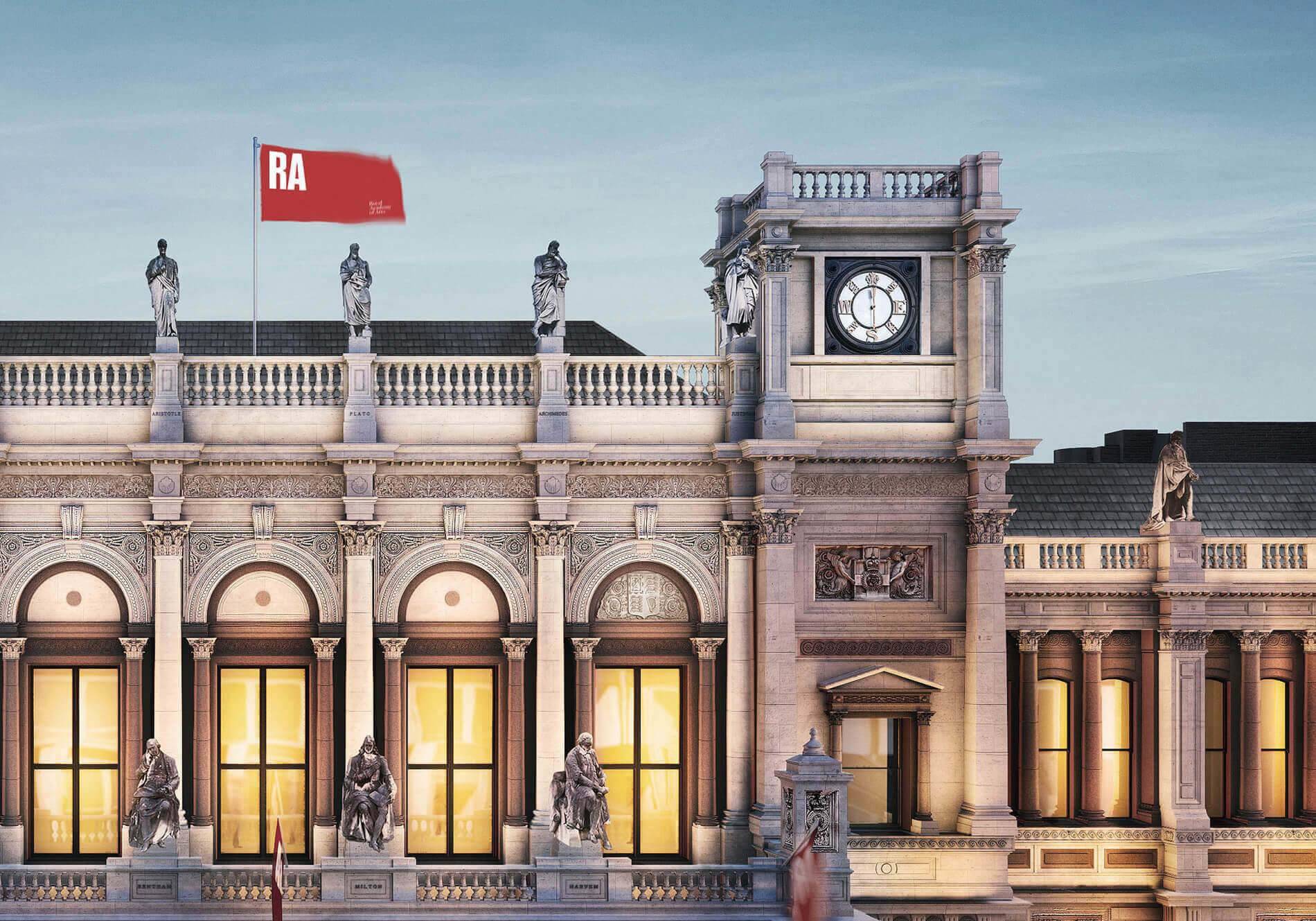
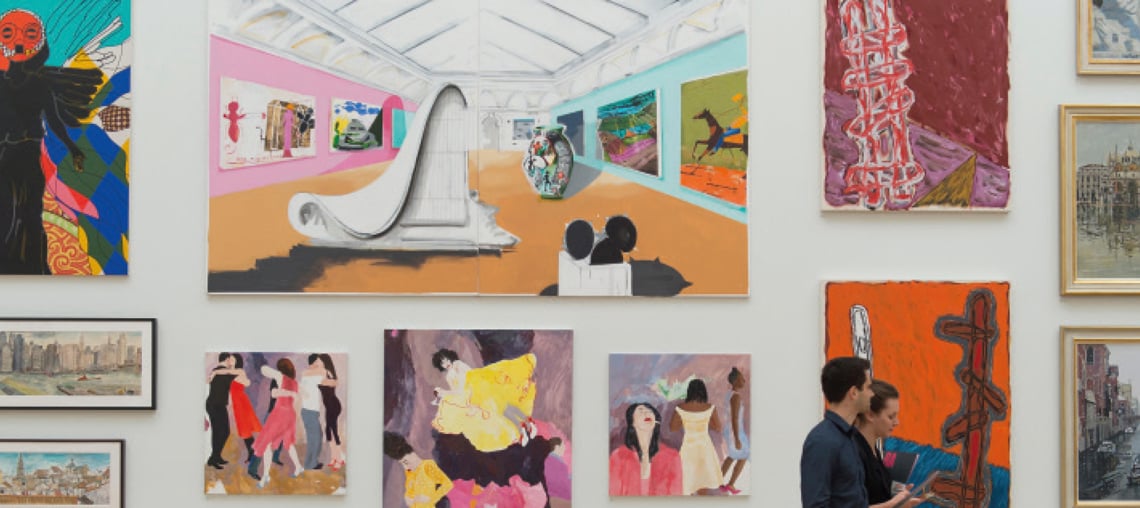
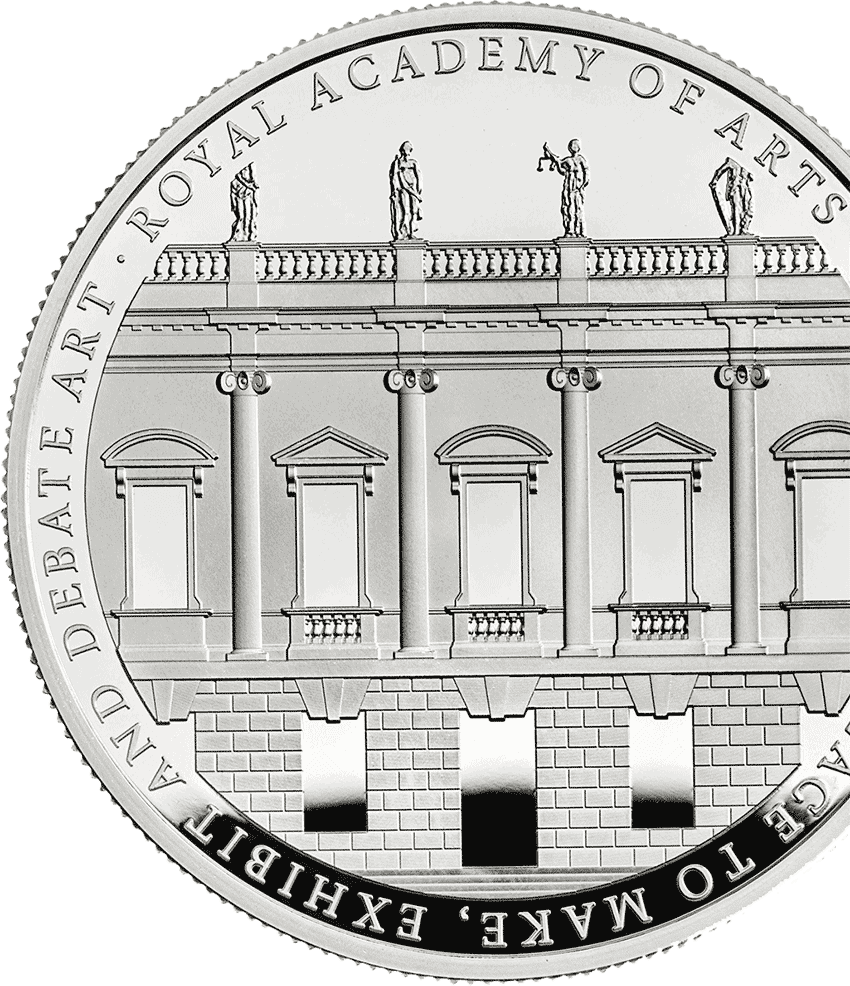
“This is an architectural detail of the main facade of Burlington House taken from an engraving in the third volume of Vitruvius Britannicus, the influential architectural treatise by Colen Campbell.
The captured section of the engraving includes recognisable features of the RA building before the additional storey was added.
The four categories of the RA are directly captured or referenced: architects, sculptors, painters and engravers, printmakers and draughtsmen. The text encircles and frames the scene.”
Sir David Chipperfield RA
